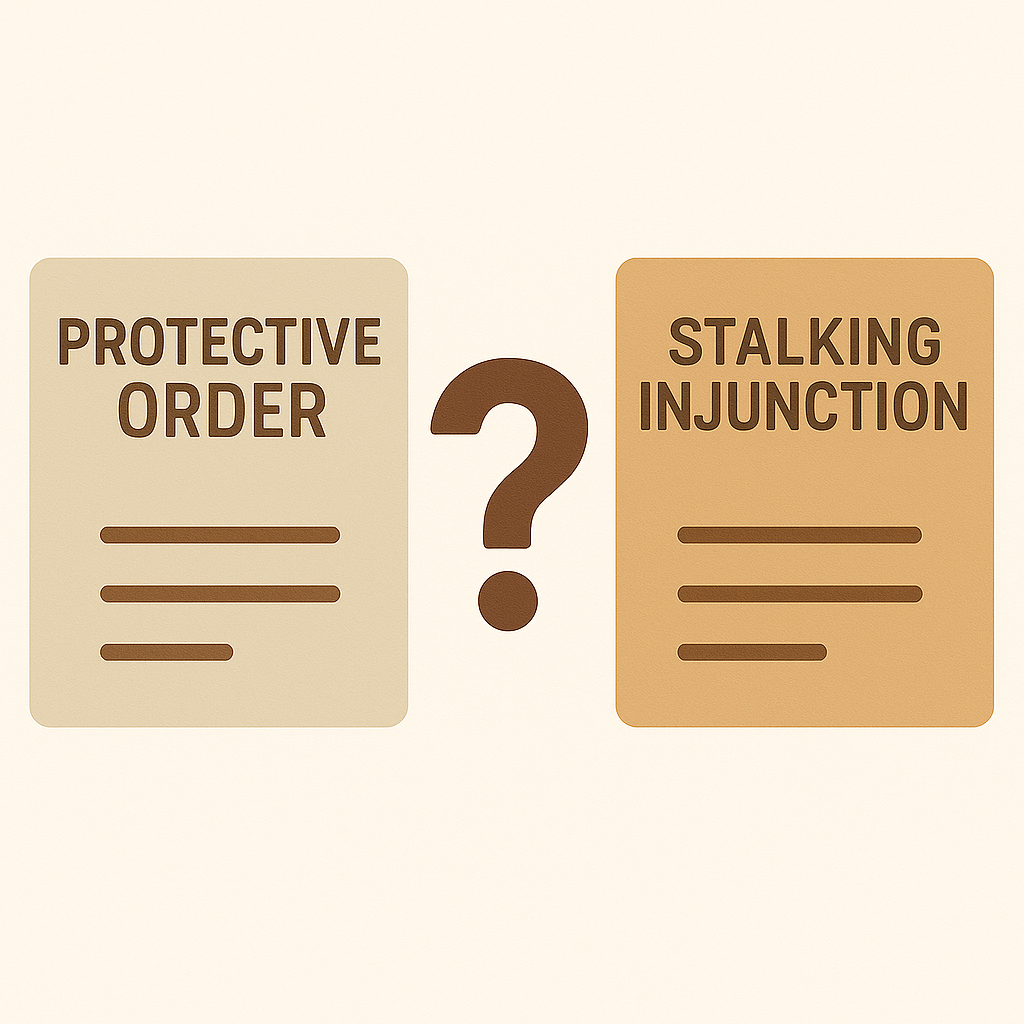Protective Order vs. Stalking Injunction What’s the Difference in Utah?
A plain-English guide to definitions, who qualifies, proof, filing steps, duration, and when to choose each remedy
Utah Law Explained makes complicated laws easy. Utah gives you more than one way to protect yourself if you feel unsafe. Two common options are a Protective Order and a Stalking Injunction. On paper they look similar since both restrict someone’s behavior and carry real legal consequences if violated. In practice they serve different purposes based on who is threatening you and what you can prove.
This guide explains the differences, who qualifies, what proof is needed, how to file, and how long each order can last so you can choose the right path and prepare with confidence.
Protective Order vs. Stalking Injunction
Protective Order: a court order available primarily for domestic violence, family, or intimate partner abuse.
Stalking Injunction: a civil order for repeated unwanted contact or conduct that causes fear or emotional distress, even without a family or intimate relationship.
Who Qualifies
Protective Order: spouses, former spouses, cohabitants, relatives, people with a child in common, or intimate partners involving abuse.
Stalking Injunction: anyone facing repeated unwanted contact that causes fear or emotional distress, regardless of relationship.
Proof Needed
Protective Order: abuse or threats by a qualifying relationship partner.
Stalking Injunction: at least two stalking incidents that caused fear or emotional distress.
Duration
Protective Order: temporary first, then up to 3+ years if granted after hearing.
Stalking Injunction: temporary first, then up to 3 years, and it can be renewable.
Which To Choose
Protective Order: threats from a family, spouse, or intimate partner.
Stalking Injunction: threats from non-family like neighbors, coworkers, or strangers.
Quick Comparison
Use this side-by-side to see the core differences fast.
Both can start as temporary orders. A full hearing decides longer-term protection and exact terms.
Filing, Evidence, Hearings, and Enforcement
How to File
Evidence You’ll Need
Hearings and Outcomes
Violations and Enforcement
Step-by-Step: Choose and File
Identify the Right Order
Family or intimate partner abuse points to a Protective Order. Non-family repeated harassment points to a Stalking Injunction.
Gather Evidence
Collect messages, screenshots, police reports, and a simple incident log. For stalking, be ready to show at least two separate incidents.
Complete the Forms
Protective Order: Request, Temporary, and Service Assistance forms. Stalking Injunction: Verified Petition. Double-check names, dates, and addresses.
File and Serve
File in district court. The court manages service or directs next steps. You may receive a temporary order while waiting for the hearing.
Attend the Hearing
Bring copies of evidence and your log. Be concise and factual. After the ruling, keep certified copies and follow all terms exactly.
Need Help Applying This to Your Situation?
If you qualify, filing quickly can reduce risk and stress. A short consult with a Utah attorney can help you choose the right path and avoid mistakes.
Talk to a Utah AttorneyVideo & Social Learning Hub
Key Takeaways
Protective Orders require a qualifying relationship and proof of abuse or threats. Stalking Injunctions do not require a relationship but need at least two incidents.
Both can start as temporary orders, then move to a full hearing that sets terms and duration.
Violations are serious. Call law enforcement, document everything, and keep copies of your order.
This page is legal information, not legal advice. When in doubt, get counsel before you file.
Next Step
If you’re deciding between a Protective Order and a Stalking Injunction, start with your relationship to the person and the proof you have.
Book a Protective-Order ConsultWe’ll help you match your facts to the right order, prepare evidence, and get ready for filing and hearings.
